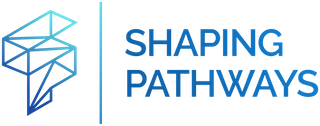Introduction to Costing Methods Managerial Accounting

Activity based costing System has developed basically on account of the limitations of the traditional absorption costing system. Activity based Costing (ABC) is a systematic, cause & effect method of assigning the cost of activities to products, services, customers or any cost object. Sunk costs are historical costs that have already been incurred and will not make any difference in the current decisions by management. Sunk costs are those costs that a company has committed to and are unavoidable or unrecoverable costs.
Price Determination
- Learn how cloud inventory software can help you to keep your finger on the pulse.
- Activity-based costing, as opposed to job costing techniques, includes additional indirect costs in direct production processes to help inform pricing decisions.
- Each batch is treated as a cost unit and costs are accumulated for each batch separately.
- The method by which a manufacturer establishes that standard, however, is probably the biggest drawback to standard costing.
- Fixed costs do not vary with the number of goods or services a company produces over the short term.
Incorrect overhead allocation can result in products being overpriced or underpriced. The cost-to-retail ratio of a business may differ dramatically from one type of item to another, but the computation only takes an average ratio. The estimate contributions 2020 will be incorrect if the cost-to-retail ratio of the items that actually sold is significantly different from the ratio utilized in the computation. Finding out the costs expended on each contract separately is the goal of contract costing.
Great! The Financial Professional Will Get Back To You Soon.
All of the direct and indirect costs firms incur when producing a good or rendering a service are referred to as production costs. Cost accounting is one method a company can use to estimate how well the business is running. Cost accounting looks to assess the different costs of a business and how they impact operations, costs, efficiency, and profits.
Comparison of Results Under Both Costing Methods

However, the electricity used to power the plant is considered an indirect cost because the electricity is used for all the products made in the plant. Are you ready to transform your cost accounting practice with modern technology? Wafeq’s cutting-edge solutions align with global best practices and are designed to streamline your accounting needs.
Our Financial Close Software is designed to create detailed month-end close plans with specific close tasks that can be assigned to various accounting professionals, reducing the month-end close time by 30%. The workspace is connected and allows users to assign and track tasks for each close task category for input, review, and approval with the stakeholders. It allows users to extract and ingest data automatically, and use formulas on the data to process and transform it. Less flexible due to the need to adhere to strict accounting standards and regulations, ensuring accurate and standardized financial reporting. It emphasizes the broader financial performance and position of the company, summarizing revenues, expenses, and profitability. Financial accounting is geared towards producing financial statements that provide an overview of the company’s overall financial health for external stakeholders.
What are the four basic types of costing?
Batch costing is suitable for companies producing general engineering goods, in which the components can be easily arranged in convenient economic batches. In pharmaceutical companies, batch costing is also used advantageously and effectively. Many researchers have worked to find more accurate data that management can use to make better decisions in various circumstances. The basic feature of functional departments is that they tend to include a series of different activities causing different costs that behave in different ways. An activity is an event, task or unit of work with a specified purpose e.g., designing products, setting up machines, operating machines and distributing products.
Accounting software supports real-time reporting that provides the most updated cost data for use in decision-making enhancing its effectiveness. Such immediacy will enable businesses to proactively respond to changes in costs and help businesses keep control of their finances. Provides a detailed breakdown of costs, including direct, indirect, fixed, and variable costs, to offer precise cost insights.
Traditional cost accounting and activity based absorption based costing vary in several ways, primarily in the complexity of implementation. We will discuss the pros and cons of both methods, along with situations where one may be more reflective of the actual allocation that the other. Different jurisdictions have different regulations and standards for cost accounting. Compliance with these regulations is paramount but can be complicated, time-consuming, and costly, especially for businesses operating in multiple regions like in Saudi Arabia. Unit-wise details of costs, their components, and the accuracy of calculations and cost data, which are made available by the costing department, go a long way in helping to determine product and service prices.
However, fixed costs are limited to a set time period because they can fluctuate over the long term. A manufacturer, for instance, can opt to raise capacity in response to the rise in demand for its product. A costing method is a way for figuring out how much something will cost. In order to assign a cost to a manufactured good, product costing techniques are used. If you overcharge for your product, you risk losing potential clients to your rivals. However, if you underprice the item, your accountant can get nervous when they see the balance sheet.
Uniform costing is not a separate or different method of cost accounting. Only members of the industry or trade association may use this technique of cost accounting. The industry members adopt the same costing ideas, processes, and procedures in order to compare firms. It is also possible to advise appropriate actions to regulate and lower costs. Uniform costing aims to standardize accounting practices and provide assistance in establishing reasonable prices for the goods produced by businesses that use this approach.
